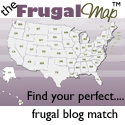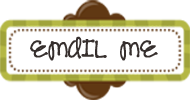When I had my first child (ages ago) I was young and didn't really know any different, so I never gave it any thought at all. I just bought the expensive little jars and went about my merry way. Well, then, when I was pregnant with my second child I was actually a caregiver for another woman's baby during the day. I was amazed that once he started eating baby food, she didn't send him with any jars. Instead, she sent these little ziploc baggies full of frozen cubes of food. At first I thought she was a little crazy, but then, after some time, I realized how amazing she was. Not only was she saving a ton of money, she was also taking it upon herself to give her baby the most wholesome foods possible. I became very interested in doing the same thing for my next baby-to-be when the time came. I did a lot of research at the time and learned anything and everything that I could so that I would do it right. I have to admit that I was actually kind of terrified. What if I did it wrong? What if my baby didn't like it? Could I really keep it up? Well, needless to say, I conquered my fears, stuck to my gun, and I did it!
Not only did my baby, in fact, love it, it helped me save money and I also got to feel good knowing that I was providing that for my child. I still buy baby food jars sometimes, because they're really convenient to keep in the diaper bag and I like buying the flavors of food that I don't generally buy, that isn't in season, or foods that don't puree or freeze well. But, now that I really have the hang of making my own food, I really couldn't imagine going back to my old ways.
It's really MUCH easier than you are probably thinking and it's not scary at all! :) For those of you who might be interested, but don't really know where to start, I thought I would provide a few tips and walk you through the procedures I use.
First things first, a few precautions:
*Always wash your hands and use clean utensils and preparation surfaces prior to making your baby food.
*Don't forget to wait a few days between introducing new foods to your baby. This allows you to become aware of any allergies your baby may have and know exactly which food caused it. Offer your baby the same food for about four days and if any signs of allergy appear, stop feeding your baby that food immediately and talk to your pediatrician. Once you've given your baby a few foods with no reactions, then you can start mixing them together however you wish.
*If you do not plan to freeze your prepared baby food, use within 48 hours of making it to avoid potential bacteria growth.
*Go HERE to learn more about safety when preparing and freezing homemade baby food.
Next, remember that you can make baby food out of pretty much ANY food. Of course, we all know about some of the foods babies under one should not be exposed to, such as honey, egg yolks, nuts, etc, but when it comes to fruits, veggies, and meats, have at it! (a list of tips will be provided later) Don't be afraid to combine flavors either! I make things like blueberry applesauce, pineapple chicken, and cheesy broccoli. Use your imagination! By making your baby's food, they are getting the opportunity to experience a wider variety of flavors and textures which will help them with their transition to table foods.
So, where DO you start? Well, you probably already have everything you need in your kitchen. If I am making a big batch of food to freeze, I will use my regular old food processor. A blender would probably work just fine, too. If you happen to have a Vita-Mix, I've heard those things are amazing. An immersion blender would work, too. If I am simply taking a portion of food from what I am already making the family, I will use my Tommee Tippee (you can get these just about anywhere)
It's a small, convenient little babyfood maker. I simply put in whatever I wish to puree, add a little bit of water, and it mixes it all up. When I'm done, the clear lid you see on top becomes the serving bowl! Tonight we had mixed veggies...
These were just frozen veggies that I first cooked. (You can use fresh or frozen foods for making babyfood, but I do not recommend using canned veggies due to possible high salt content and for other reasons I won't delve into right now) I then took a serving-size portion, let it cool a bit, and pureed it. Now, normally when I am making a bigger batch to freeze, I use my food processor, but since I was already using the Tommee Tippee tonight, I just used it to make a few batches. You will want to cook firmer fruits also, such as pears and apples. Softer fruits won't need it, like banana. So, a few tips...
*Don't forget to add a little water. (If a fruit is already particularly watery, you will not need to) This will help the food to move around as it's being pureed. It will also help it be smoother and not so thick. You can also use breast milk (that has NOT been previously frozen) or formula. However, when preparing for freezing, some choose to thin the puree down AFTER thawing based on the baby's needs. It's just up to your personal preference. You can also use the liquid the food has been cooked in to help maintain as many of the nutrients as possible, though you should NOT use reserved water from carrots for babies under 7 months due to the high nitrate level.
*Blend according to your baby's needs. If you have an older baby, you can puree it a little less by using the "chop," grind," or "mix" setting so the food is a bit lumpier to allow for some chewing. If your baby is just starting food, be sure to set it to "liquefy" or "puree."
*If you are taking a portion from the family's meal to puree, reserve that portion BEFORE adding butter, salt, etc. (You can also gradually start to add herbs/spices to your baby's food following the same "four-day trial" method you use when introducing new foods to make sure there are no allergies present after about 7 months of age)
I then cover the tray in plastic and freeze over night. In the morning, I pop the cubes out and put them in small ziploc freezer bags. You can put them all in one bag and remove a few cubes at a time as needed, or you can put a few cubes in each bag to have ready-to-go portions that you can take with you. I generally put them all in one bag and if I need to take some with me, I THEN put a few cubes in a separate bag to take. I then write the type of food and the date on the ziploc. I would recommend using the cubes within one month of freezing (for optimal taste and freshness) but it is safe to use within 3-4 months of freezing.
When it comes to thawing and heating the baby food, you can take out as many cubes as your baby will eat in one to two days and put it in a small container in the fridge overnight to allow to thaw. Once thawed, you can heat in the microwave in a glass bowl (I would not sure plastic, as stuff can leach into the food). Be sure to STIR the food WELL to avoid leaving any hot pockets that could burn baby. Test the temperature before serving to your baby. You can also simply thaw and heat in the microwave. Or, you could place the cubes in a small bowl inside a larger bowl of hot water to thaw and heat. It's really just a personal preference. If you thaw the food in the refrigerator, be sure to use it within 48 hours of thawing.
Another thing I do, now that my baby is a bit older I freeze whole chunks of food, such as potatoes. (I have found that there are some foods that just don't thaw well and tend to be rubbery after thawing, like carrots) I will use potatoes for this example because I was already making mashed potatoes tonight any way. :) I simply wash, peel, and cut my potatoes into bite-size pieces.
I then cook them in boiling water for about 10-13 minutes. I do not cook them until they are as soft as when I'm making regular mashed potatoes. You want them to be just SLIGHTLY more firm so that they will hold their shape and when you reheat them they will cook and soften a little more any way.
I then drain them and let them cool completely before separating them into small freezer bags. Again I date them.
I usually make these when I am already making mashed potatoes for the family because I am already washing and cutting up potatoes any way, so I may as well do a few more. However, I cook them separately from the regular potatoes I'm making. I do this because I want them cut smaller and because I do not cook them as long as the rest of the potatoes.
There you go! The possibilities are endless. Try it. You may find that you love the rewarding feeling of going this extra step in ensuring your child's healthy growth and development. Or, you may find that it's just not for you, and that's OK, too! As long as you are providing your child with all of the nutrients they need to grow, it shouldn't matter whether the food is coming from your freezer or those cute, convenient jars. :)
:Tips & Recommendations:
*NEVER freeze food in glass unless the jars are specifically labeled as being safe to do so.
*When thawing, some foods (like squash) will become watery. If it is too watery, add cereal, mashed banana, or mashed potato to help thicken it. (It is NOT recommended to add cereal PRIOR to freezing due to potential risks of tummy upset or fat separation during the freezing process.)
*When freezing fruits, I generally add a couple of drops of lemon juice to minimize browning during freezing. This is a personal preference and any food that has natural browning that occurs during freezing is still safe to eat.
*I recommend peeling fruits and veggies prior to pureeing to minimize choking hazards. If your baby is older, they may be able to begin
*Meats ARE easy to make and freeze, however, they can get grainy when thawed, so it is probably best to wait on this until your baby is a bit better at handling textures. When pureeing meat, cut it into cubes first and use cold meat for best results.
*When using frozen veggies, check the package to see if salt has been added. If so, simply give them a quick rinse before cooking.
*Green beans and peas are difficult to puree to a truly smooth consistency. Using frozen green beans and peas tend to yield a smoother result. You may want to wait on these until baby has a better ability to handle a little bit of texture in their food.
*I just HAD to pass on this article about why cereal is NOT the best first food for your baby, according to Frank Greer, MD [American Academy of Pediatrics's Committee on Nutrition]. I had NEVER heard this before and thought it was very valuable information.
Disclaimer: In NO way am I an expert in the area of what is safe and healthy for your baby. ALWAYS check with your pediatrician first to discuss whether homemade baby food is a good and safe option for your baby. I am simply providing you with information for what has worked for me and my family and hope that it will provide some useful guidelines for you and yours. You can find expert information at the following site:
www.aap.org (American Academy of Pediatrics)
For more GREAT information about making your own baby food and even some recipes, click HERE to go to wholesomebabyfood.com
Last, but not least, HAVE FUN! Hopefully you'll come to enjoy making your baby's food as much as I do, and let's not forget that your pocketbook will be a little bit heavier! That's ALWAYS a plus! :)






























































I just wanted to give you hands up on making your own baby food. I have twins and have been making mine since they started solids. It is so easy and saves tons of money. Even purchasing organic fruits, vegetables and free range meats is cheaper than the processed baby food you can purchase, and like you, I feel so much better offering my baby something I "know" is healthy.
ReplyDeleteThanks! I wish I would have known about it sooner to offer my first son the same, but I guess he still turned out ok. ;) (So far, any way. lol) It really does make a mom feel good about being able to give that to her baby. :)
ReplyDeleteThank you so much for taking the time to share this information.
ReplyDeleteYou're very welcome! Glad you found it useful. :)
ReplyDeleteGreat post Ali! I think I'll have to try it with my little one! Thank you for taking the time to share!
ReplyDelete- Cathy ;)
Thanks! You definitely should! Most likely you will find that it's a lot easier and a lot less time consuming than you think. Plus the benefits are undeniable. Good luck! :)
ReplyDelete